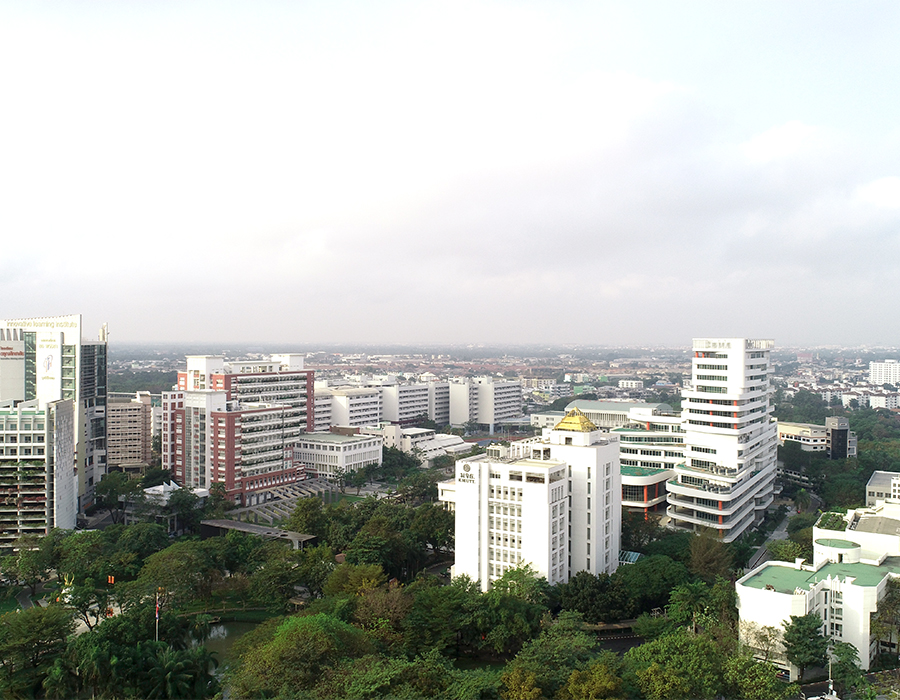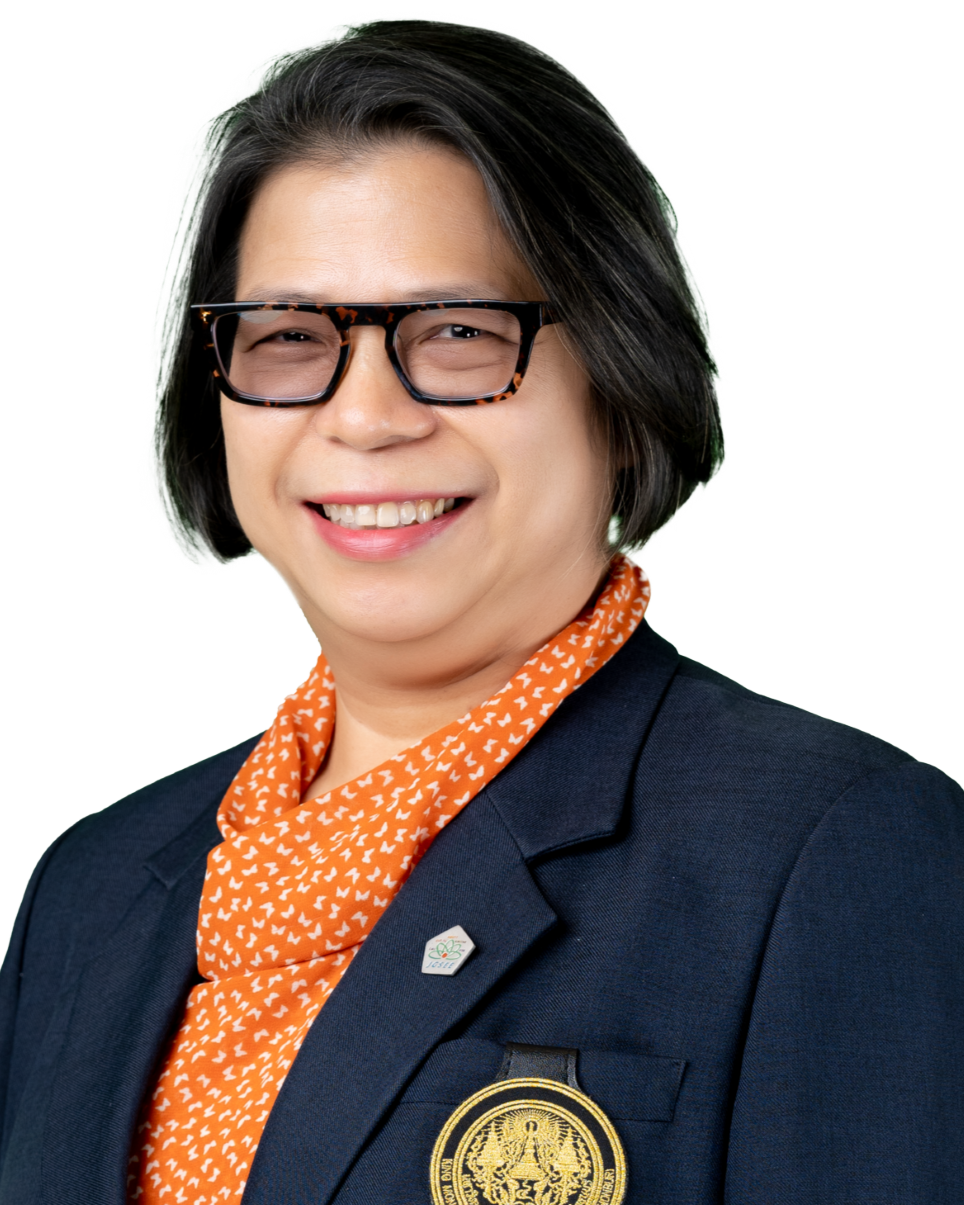
An important environmental issue that has caused people around the world to pay attention in recent years is air pollution. Especially pollution from PM2.5 dust is becoming more severe all over the world, including Thailand. Especially in the northern region, Bangkok and surrounding areas, which in 2023 has the highest concentration of small dust particles in the world. Therefore, in order to alleviate the PM2.5 dust problem, there is a pollution database to find the true origin of small dust particles or PM2.5, it is an important tool in planning policies to find ways to solve or alleviate air pollution problems in Thailand.
In order for Thailand to have correct and accurate pollution accounting information for solving air pollution problems, Assoc.Prof.Dr. SAVITRI GARIVAIT and colleagues from the Joint Graduate School of Energy and Environment (JGSEE), King Mongkut’s University of Technology Thonburi (KMUTT. ) therefore carried out the project “Creating guidelines for managing PM2.5 dust by researching the occurrence of secondary particles. From using the air quality management model system in Bangkok and the central region” to study the origins and mechanisms of secondary PM2.5 (Secondary Aerosol Precursors), including creating guidelines and policy recommendations for Manage air quality that can solve air pollution problems from PM2.5 in Bangkok and surrounding areas. to be reduced in a concrete way It received research budget support from the National Research Council of Thailand (NRCT).

Assoc.Prof.Dr. SAVITRI said that in the past 4-5 years, Thailand, especially the northern region, Bangkok and surrounding areas Has been affected by PM2.5 dust continuously exceeding the standard. Affecting the health of people in the area This causes the number of patients with respiratory diseases, lung cancer, and acute lung disease in young children to increase. The use of the “Pollution Discharge Database” is therefore an important tool in solving this problem.
“But because PM 2.5 dust comes from direct emissions from sources such as open burning. Dust from cars that is “primary dust” also has “secondary” PM 2.5 which is a combination of precursors such as nitrogen oxides, Sulfur dioxide, ammonia and NMVOC and other substances also undergo chemical reactions in the air. Therefore, we need both a database of the ventilation of primary PM2.5 dust and of the precursors that cause secondary PM2.5 to import into the air quality management model system in Bangkok and surrounding areas. before using it to make decisions on solving the air pollution problem from PM2.5 in the country, both in the medium and long term.”
Although the research project is limited to Bangkok and the surrounding area, the actual work requires collecting data from other areas throughout the country. Because air has no boundaries. Air pollution in other areas It also affects air pollution in central Bangkok and surrounding areas. which from research found that The ratio between primary PM2.5 and secondary PM2.5 is 70:30. In Thailand, the source of PM2.5 comes from burning biomass in the open air in agricultural areas, followed by burning firewood/charcoal. for cooking in the household sector small thermal power plant cement production and traffic, respectively
“In the Bangkok and surrounding areas, the primary source of PM2.5 comes from traffic. Both from small and large trucks, buses, personal cars. Industrial combustion from surrounding provinces such as Nakhon Pathom and Samut Sakhon, while primary PM2.5 dust from the central region originates from open burning in agricultural areas. and cement production But it will be noticed that during Bangkok The surrounding area and central region are most affected by air pollution this year. It will be from December to March every year. This is a result of both entering the winter period where air masses move at a low speed. Including the period in the northern region The northeastern and central regions are entering the period of preparing the area for a new round of agriculture. Therefore, open burning has increased in number. Including forest fires in many areas. As a result, the amount of air pollution has greatly increased and affected Bangkok and surrounding areas.”
Assoc.Prof.Dr. SAVITRI added that “If we look only at Bangkok and the surrounding area, we will see that the main causes of primary PM2.5 come from the traffic and transportation sectors. Most of the cars have a long lifespan. It affects the exhaust gas emissions in large quantities. If Thailand can carry out the policies that the government has set That is, the use of Euro 5 standard fuel starting on January 1, 2024 will be able to help reduce the amount of primary PM2.5 dust by more than 10% by 2030, and when combined with the factors of using EV cars that increase in volume everywhere. year It will help reduce the amount of air pollution in the future. As for burning in the open air, it was found that Bangkok area and the surrounding area is affected by nearby areas Therefore, measures must be taken to control the burning of biomass scraps. Especially in the provinces of Kanchanaburi, Lopburi, Ratchaburi and Suphanburi. which has a high rate of open burning in rice fields and sugarcane fields.”
The data from the research was forwarded to the Pollution Control Department and Bangkok Province. for use in policy design and measures to correctly and accurately solve the PM2.5 pollution problem in the area. Able to solve the problem of the origin of PM2.5 dust.
Assoc.Prof.Dr. SAVITRI added that “From the research, it can be seen that the origins of dust are in many areas of the country. The information from this research will help develop personnel from relevant agencies in each area to be able to use the information to design solutions to directly solve the problem of the origin of PM2.5 dust without having to wait for orders from the Pollution Control Department. that used to be Because from research, we clearly know the origin of PM2.5 dust. Every sector is involved in creating PM2.5, from the public sector to the industrial sector. Therefore, the dust problem is not a problem of any one person, but a problem that everyone must work together. To reduce the amount of PM2.5 dust in the area. To achieve sustainability in solving problems in the future Because everyone does not have the right to breathe clean air. But we also have a duty to make the air of good quality and safe for everyone.”